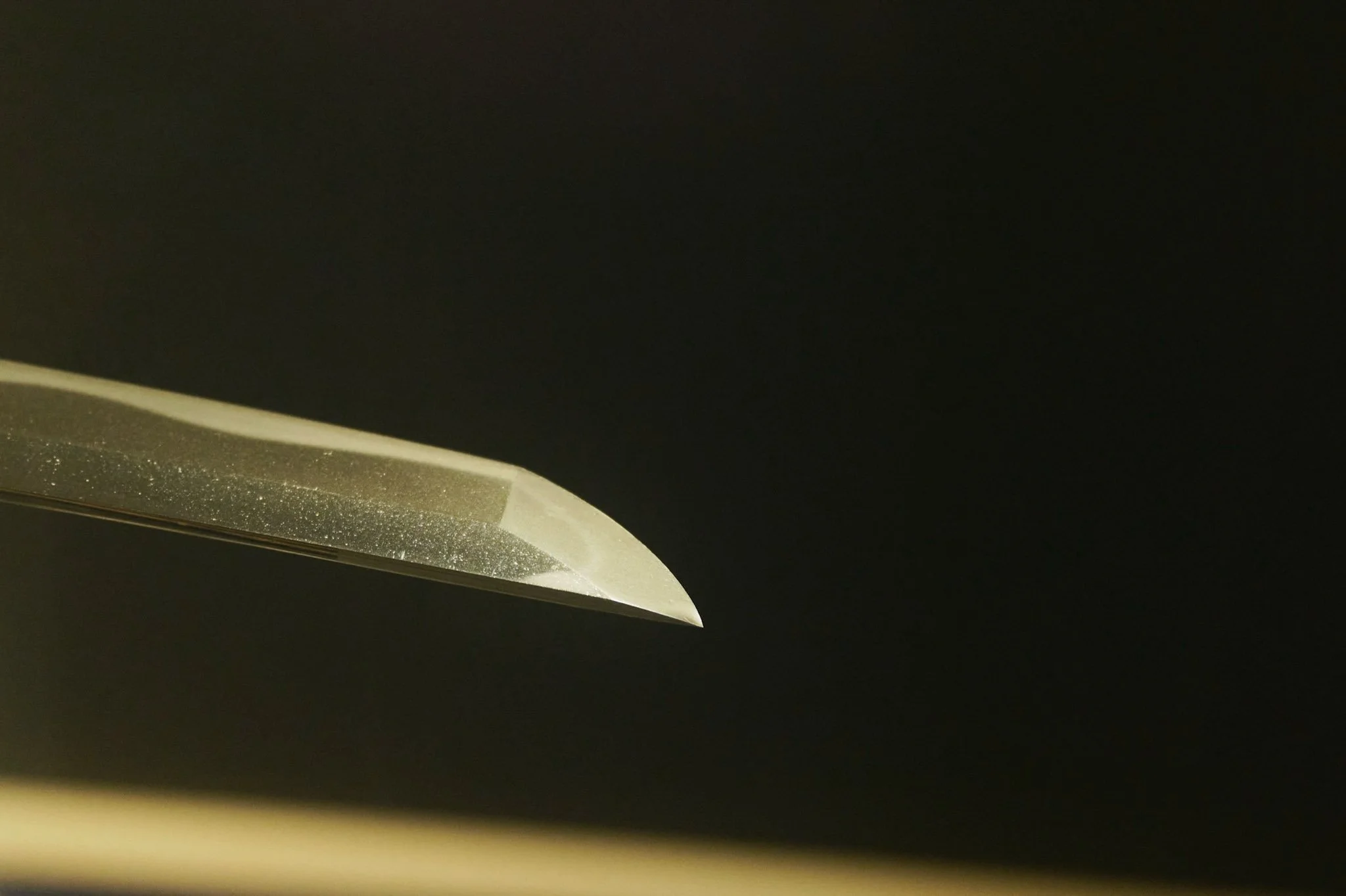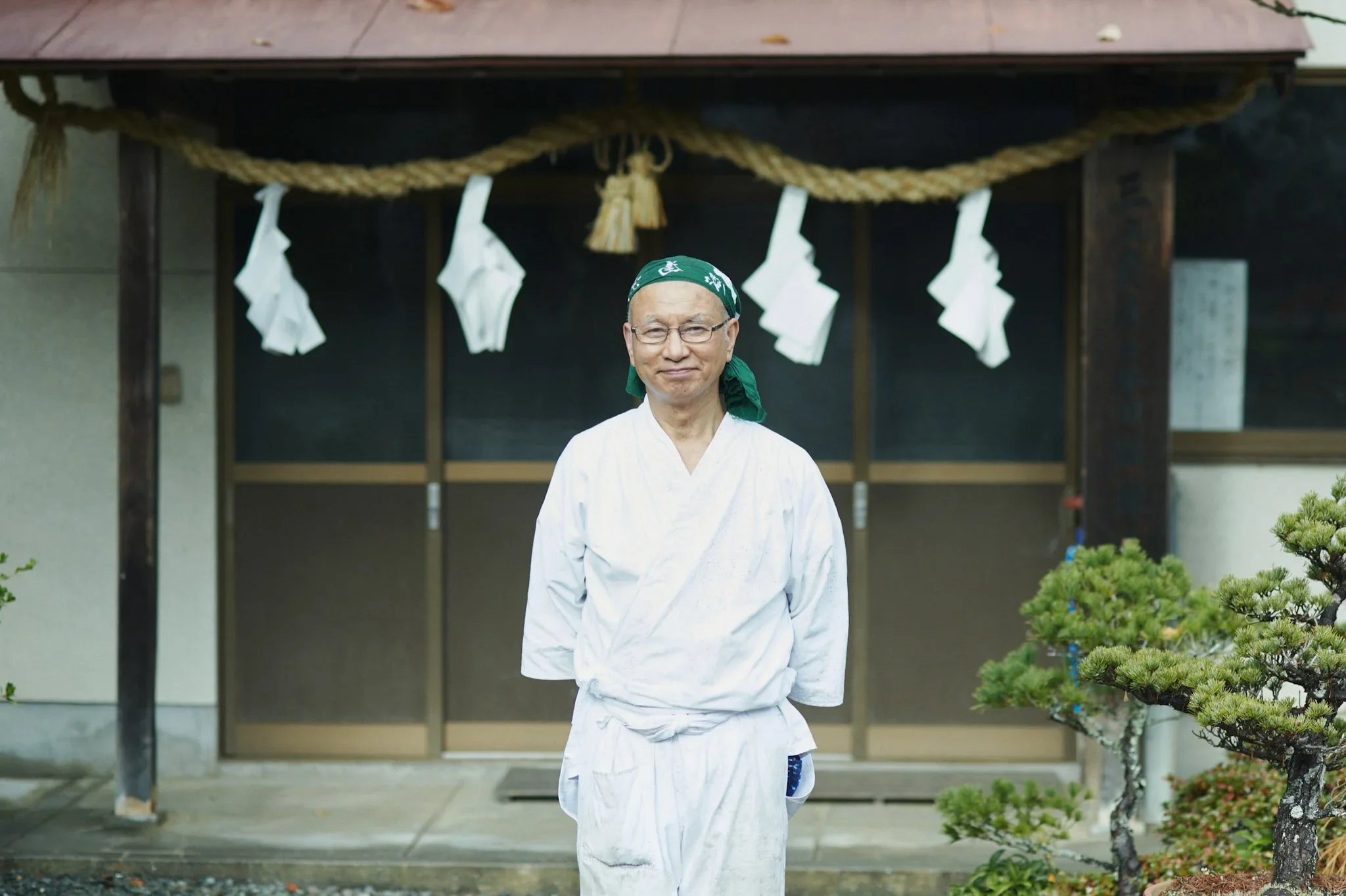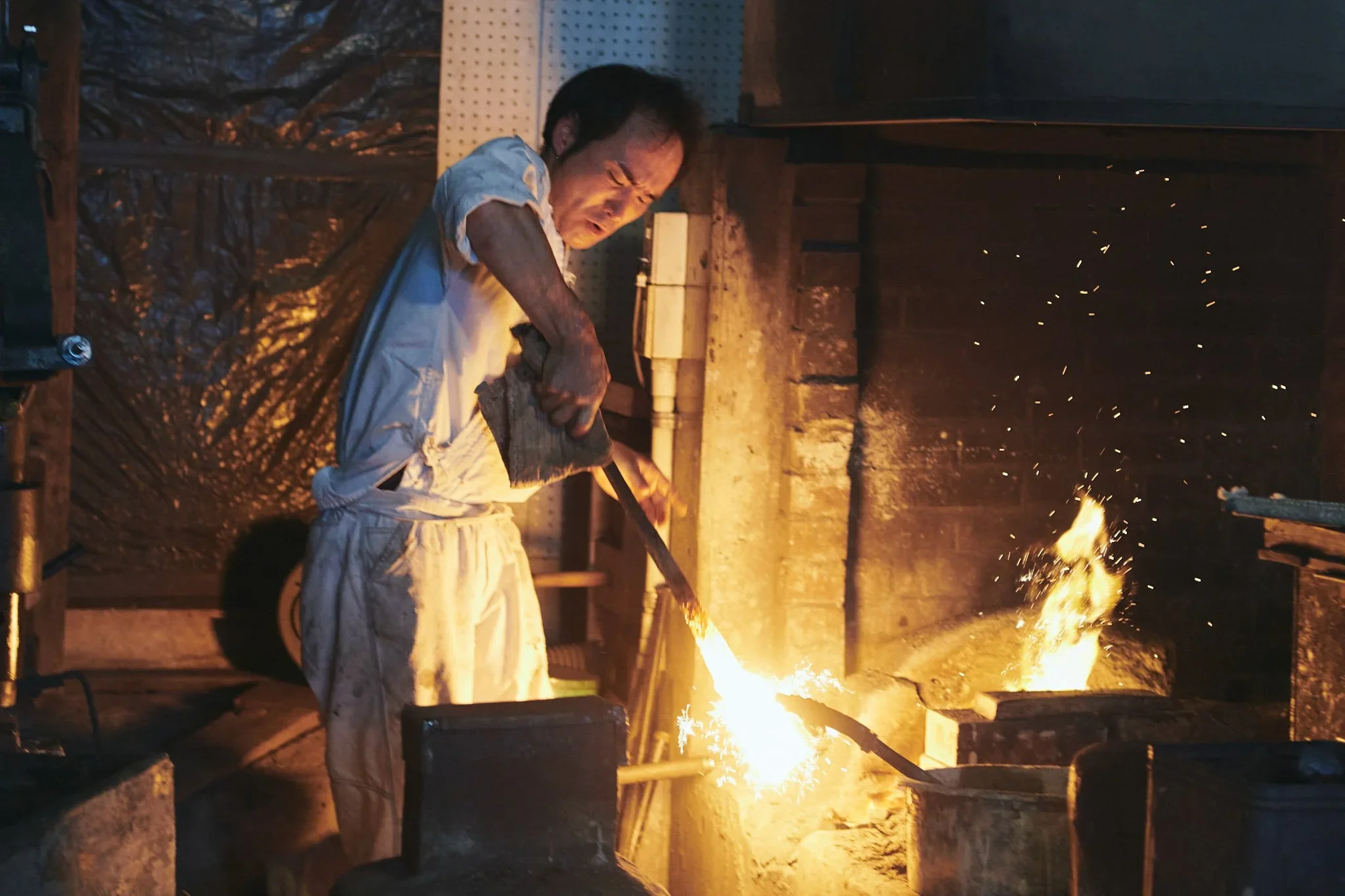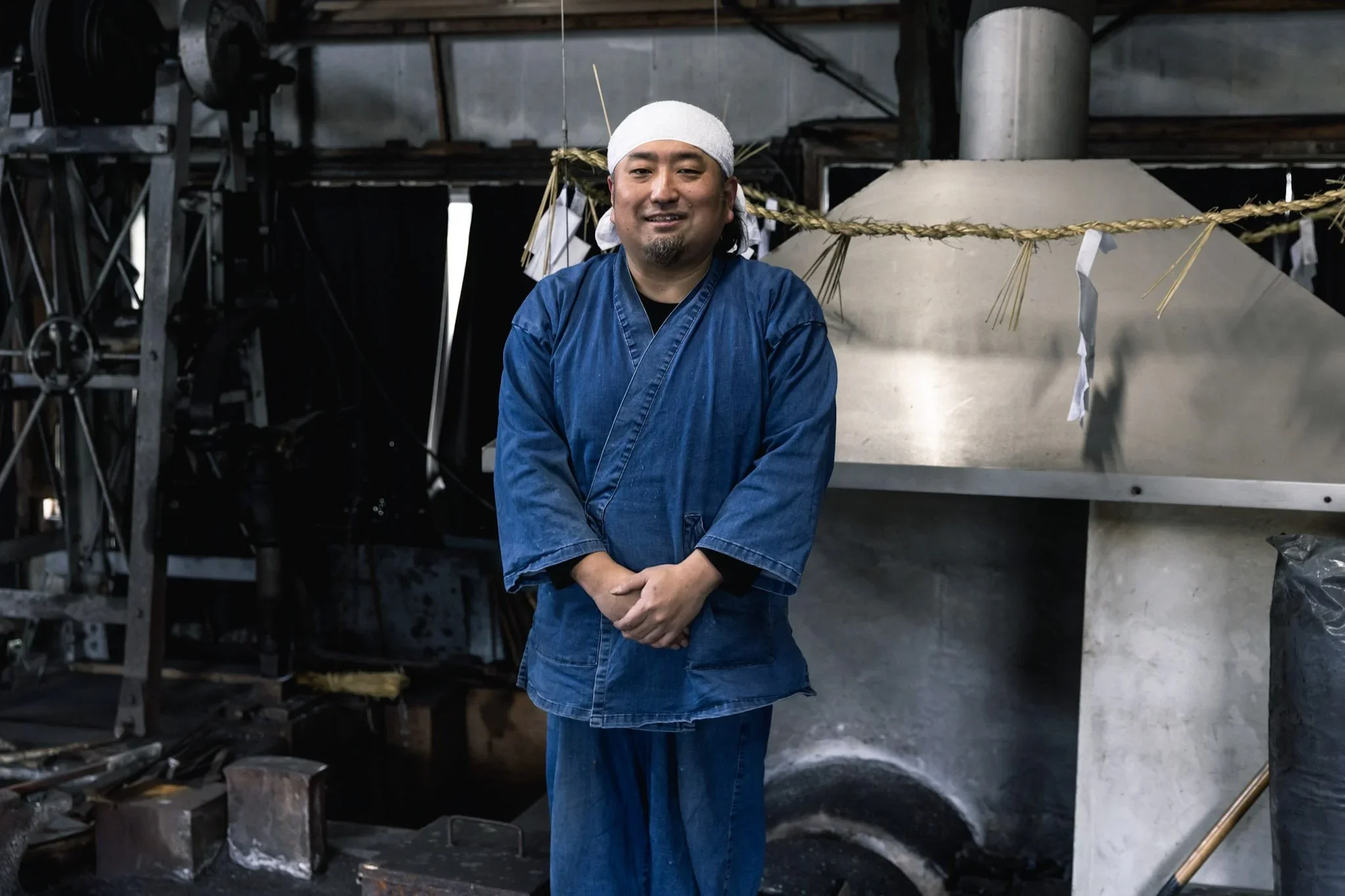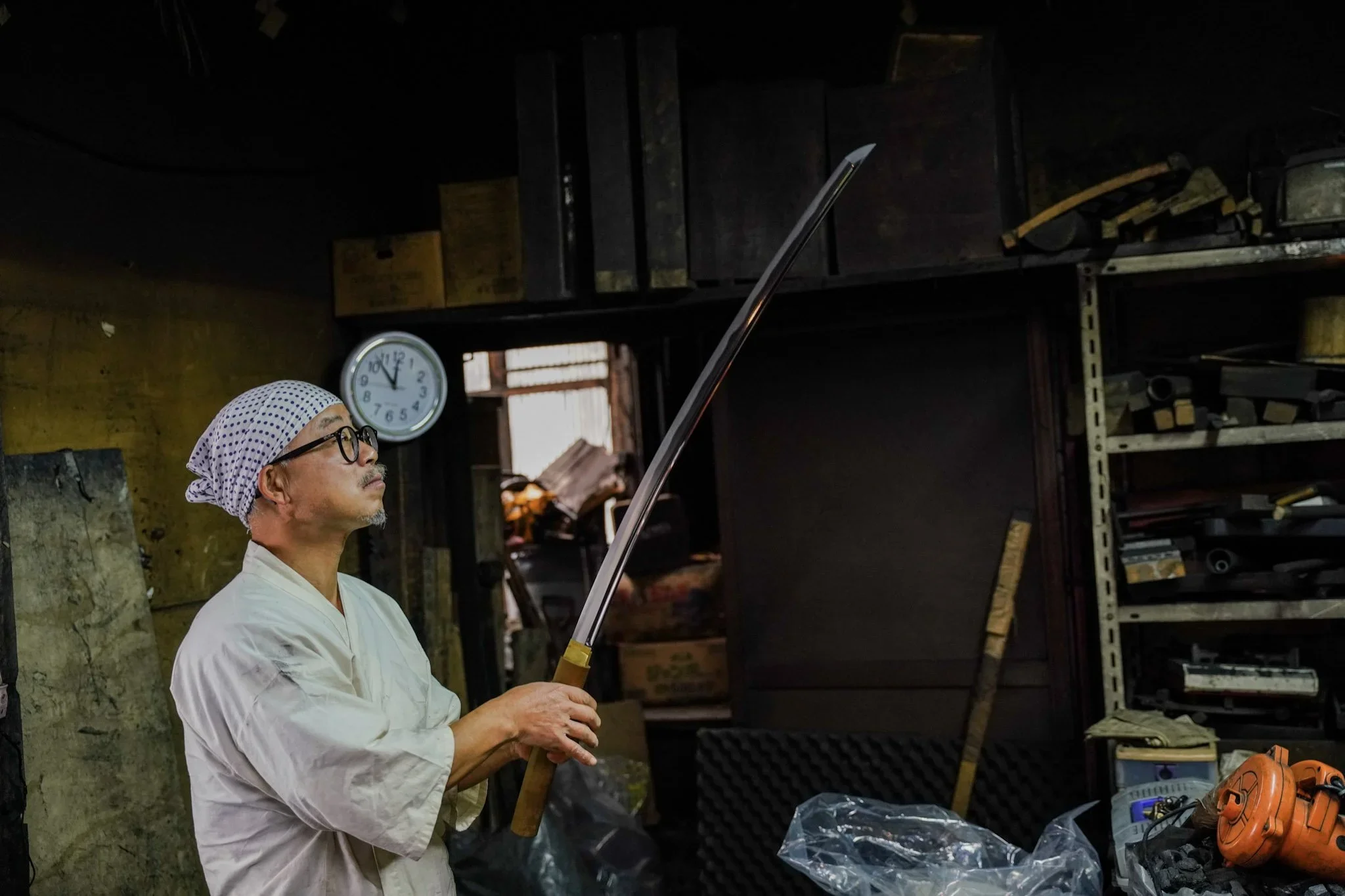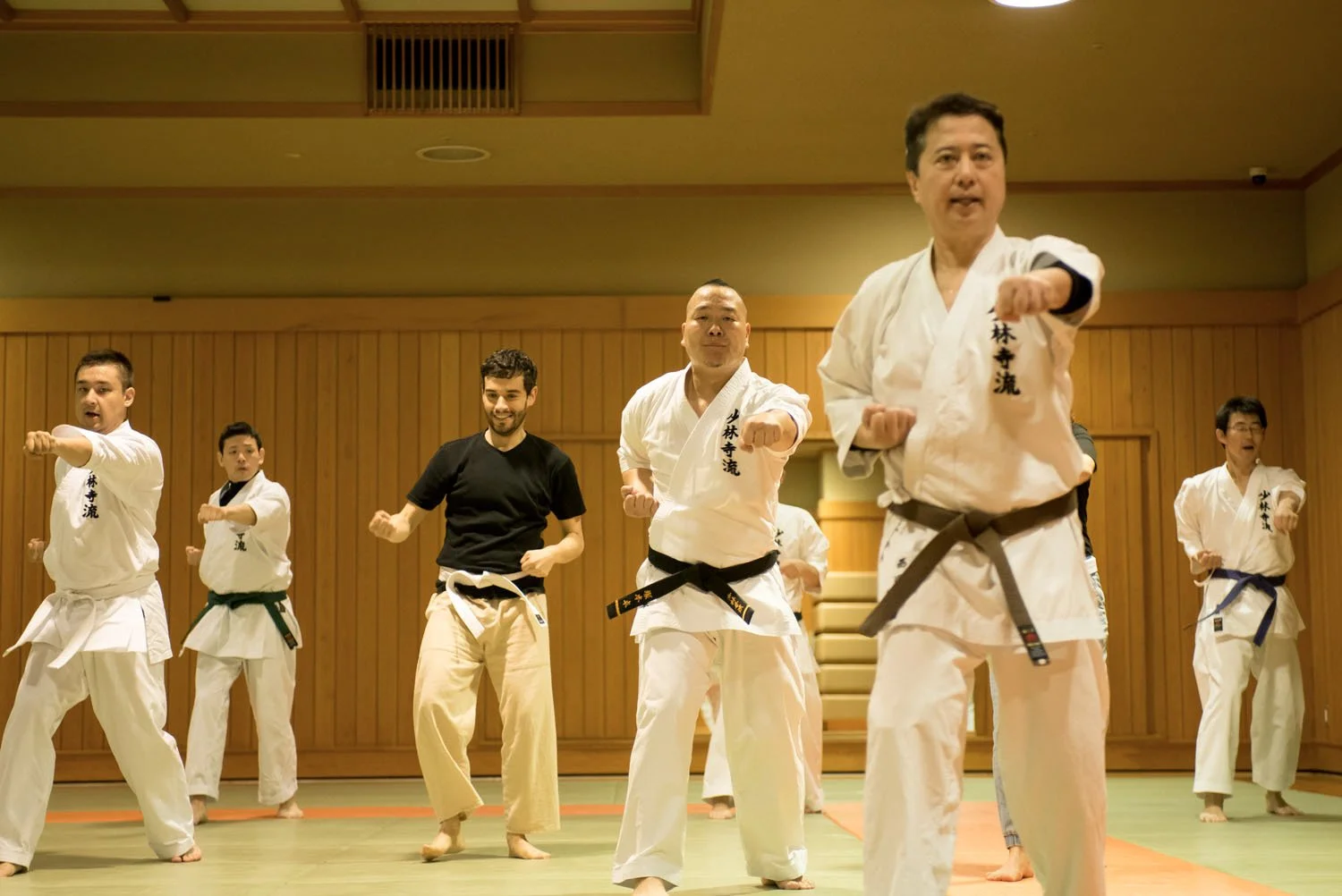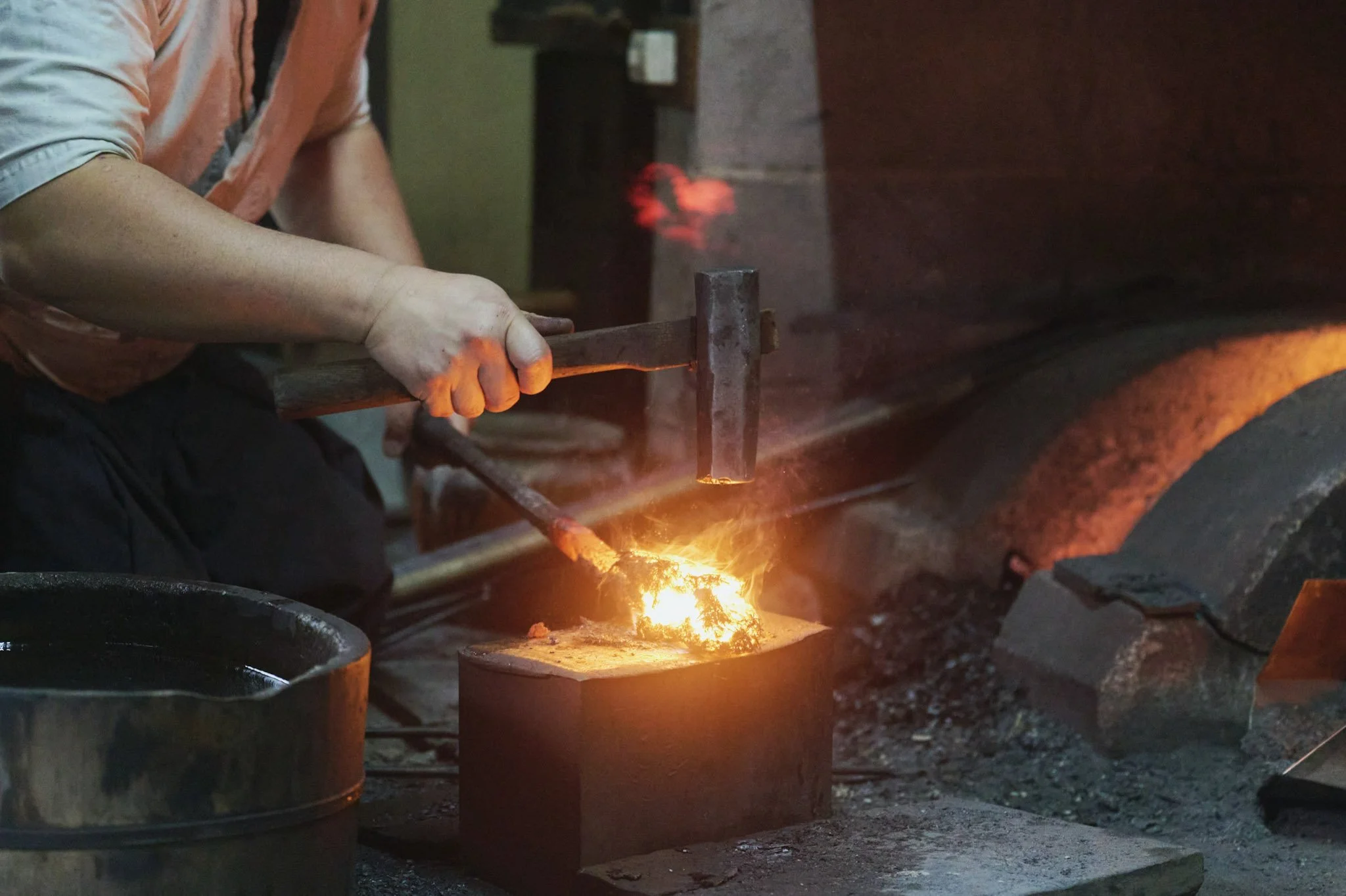
Meet the masters of the samurai swords
Meet the katana masters who are keeping this craft alive for future generations, where the warrior spirit meets the art of Japanese craftsmanship.
In this Guide:
Katana sword history in Japan
Katana swords in modern Japan
Meet the katana masters of Japan
The craftsmanship of katana
Katana Sword FAQ
A product forged by flame, patience, strength, and skill, the Japanese katana sword is a masterfully crafted blade with intrinsic cultural and historical ties.
One of the three emblems of Shintoism handed down from the Sun Goddess Amaterasu to the imperial family, the katana is as much a symbol of bushido philosophy as it is a pinnacle of Japanese craftsmanship.
As described by Ethel Mumford, a Japanese katana is far more than a weapon or a simple product of admiration; instead, “it is the work of gods; it is animated by spirit.”
This vitality has fascinated audiences for countless centuries, undoubtedly contributing to the continued esteem katana swords receive, even in modern ages where the clash of blades no longer rings out across the backdrop of battlegrounds and ancient streets.
The History of Katana Swords in Japan
A word tracing back to even one of the very first pieces of literature recorded in Japanese history, the Nihon Shoki (720), the katana’s form has transformed throughout time, varying in length and usage before codifying into the iconic curved, single-edge blade seen today.
The skilled craftsmanship imbued in each blade not only historically received recognition within the Japanese archipelago, but attracted attention overseas from as early as the 15th century, with documents recording both the export of Japanese-crafted katana to Korea and China, as well as the journeys of Korean swordsmiths arriving to Japan to train beneath the masters and learn their forging techniques.
However, modern conceptions of the katana blade are frequently rooted in the Muromachi or Edo period – Japan’s burgeoning age of samurai and bushido culture, most elegantly represented by the shining sword clasped in the warrior’s hands. In this era, a katana equated social status; not only was it a visible sign of rank and wealth, it also wordlessly imparted the samurai’s ability to enforce rule.
Despite being wielded by the samurai, every sword was thought to have its own soul, imbued into the blade during the critical moment of hardening, as the hot metal was thrust into water, releasing billows of smoke – and, as believed – fragments of the craftsman's own spirit. Samurai were seen not as owners of the katana, but as mere “custodians,” momentarily preserving the history and soul of the sword before passing it onto the next generation.
Katana in Modern Japan
While a storied craft with both practical applicability and breathtaking aesthetic quality, the number of katana sword masters in Japan is steadily dwindling, a result of prior historical circumstances, Japan’s aging population, and the sheer amount of dedication required to receive the national certification designating a katana-crafting hopeful as a verified master. In addition to these factors, the era of the samurai has long passed; as the katana swords are no longer actively utilized in battle or carried openly through the streets as a symbol of status, the only places they can be found are displayed in museums, coveted in private collections, or wielded in movies.
Following the Boshin War, Meiji Restoration, and eventual overthrowing of the Tokugawa shogunate, the prominence of katana in everyday society sharply decreased as the samurai class were gradually stripped of privileges, including the right to carry swords in public. The modernization of the military also diminished the active need for crafting katana blades. Then, following World War II, the manufacturing of katana, and martial arts practice utilizing the blades, were officially banned, with restrictions only lifted in 1953.
Currently, only approximately 150 active katana swordsmiths remain in Japan, diligently sustaining this noble craft for future generations. The katana masters below are some of those dwindling few who continue to produce an array of masterpieces in various styles, proudly keeping the profession alive.
Meet the Katana Sword Masters
Tsuneharu, Ishikawa Prefecture
The sole sword maker in Ishikawa Prefecture, Tsuneharu pursues crafting a form of katana unlike conventional swordsmiths - his goal is to recreate a style of blade predating the Muromachi period (1336-1573) using accumulated iron products produced no later than the Edo period. Through the utilization of these abandoned iron products, Tsuneharu masterfully crafts a steel blade from what he considers superior material. Welcoming all questions, he urges visitors to see the depth, difficulty, and raw beauty of crafting swords for themselves.
Fusahiro, Saitama Prefecture
A specialist in the “mamori-gatana,” – a shorter style of blade frequently used in spiritual ceremonies and offering protection against both physical and immaterial foes – Fusahiro first developed his reverent passion for crafting katana after visiting the Tokyo National Museum. There, he laid eyes upon an elegantly preserved sword, in pristine condition despite being over 800 years old, and realized katana were not mere relics of a long-forgotten past, but rather a physical embodiment of culture passed down from generation to generation. While Fusahiro rarely lets outsiders into his workshop, he understands the crucial importance of ensuring that the way of the warrior is sustained for the future and now welcomes in respectful observers to witness his katana crafting techniques.
Sadanao, Hiroshima Prefecture
A highly revered Japanese sword master, Sadanao boasts a collection of titles and awards pointing towards his sheer samurai sword making skills and indisputable expertise. Beyond receiving the Prince Takamatsu Award, the Award of Excellence, and the Kaoriyama Award, as well as crafting the Spear of Longinus for the critically-acclaimed animated film Neon Genesis Evangelion, Sadanao also acts as president of the All-Japan Sword Artisans’ Association. Every katana crafted in his workshop possesses its own destiny, marked by the hands of a master craftsman.
Nobuyasu, Fukuoka Prefecture:
At this impressive katana studio in Fukuoka, Nobuyasu continues his family's long-held tradition of crafting samurai swords, a blade praised for both durability and beauty. The 5th-generation of katana swordsmith, Nobuyasu's workshop not only pays homage to Japan's history of crafting katana blades, but also to Fukuoka's rich tradition of iron manufacturing. When visiting his katana workshop, Nobuyasu will not only provide a tour and demonstration of his techniques, but also provide a forged blade inscribed for each visitor.
Naomasa, Saga Prefecture
Trained under the iconic Hiroshima katana master Sadanao, Naomasa continues the art of samurai sword crafting in Kyushu. At his studio, located in serene Saga Prefecture, Naomasa operates his furnace by hand, stoking the flames required for the steel to reach the optimal temperature. Beyond mastering full-length katana swords, he also specializes in mamori-gatana, a shorter katana blade generally no longer than 25 cm in length. He blends precise techniques and centuries of tradition in order to uphold Japan’s enduring legacy of katana swords in Kyushu.
Tsunehira, Yamagata Prefecture:
Having achieved mukansa status, the highest rank for a swordsmith, at the age of 36, Tsunehira continues to pursue greatness and perfection. As the sole samurai swordsmith in Yamagata Prefecture, he is revered as both a legendary teacher and a master craftsman. Tsunehira has imparted his knowledge to numerous apprentices, who now diligently preserve the profession for future generations. In his studio, Tsunehira remains deeply engrossed in the sword-crafting process, meticulously tending to the furnace and carefully overseeing each step. Crafting a single sword may require months of concentrated effort and expertise, but in each finished product, a fragment of Tsunehira's artistic spirit shines.
Craftsmanship and Katana
The process of crafting just a single katana blade can take almost three months, or more, to complete. While various factors influence the overall crafting time required, such as the skill of the master and techniques used, most katana masters devote a staggering amount of time making a Japanese sword, from start to finish. The entire katana sword forging process is completed by hand, utilizing precise artistry and paying unwavering attention to detail: even the tools used by the masters are hand-forged, ensuring each katana master has equipment best-suited to showcase their style and skill.
Aside from the immense amount of time, effort, and expertise invested into shaping steel into a masterpiece, the materials required to craft a katana are both highly particular and severely scarce. Take, for instance, tamahagane, the steel sand that serves as the core ingredient in crafting katana.
n incredibly limited resource, tamahagane is found only in Japan’s Shimane Prefecture, and access to this material is strictly regulated by the Japanese government. Even world-renowned master swordsmiths are required to apply in advance and state the exact amount of the precious material they require for the year.
After completion, each blade must also receive verification proving the katana’s authenticity. As a result of all of these factors, an authentic katana crafted by a certified swordsmith is typically priced between 10,000 to 25,000 USD, although the rate can reach far higher depending upon the skill and prestige of the master.
These masters are some of the skilled minority left that others can learn samurai sword making from, acting as bastions of cultural knowledge for future generations. While most katana workshops are solitary, spiritual places - harkening back to the blade’s sacred origins - an increasing number of craftsmen recognize the crucial need to expand access and educate interested acolytes on the centuries-old techniques that sustain this craft. Witness the creation of these striking works of art, guided by master Japanese swordsmiths, and participate firsthand in a heritage filled with fierce valor and shining brilliance.
Japanese Katana FAQs
-
A katana is a traditional Japanese sword made from tamahagane steel, famously used by Japanese samurai warriors.
-
A katana is made over a number of months, folding steel repeatedly in order to remove impurities and improve strength.
-
Katanas are no longer actively used in Japan, but are occasionally wielded in martial arts (like iaido and kendo), as well as collected for their cultural and artistic value.
-
All traditional katana are made by skilled master swordsmiths. Mass-produced “katana” swords exist, for decoration or martial arts, but authentic katanas are crafted by hand over a matter of months.

